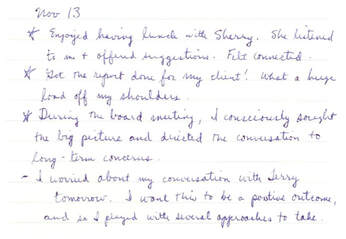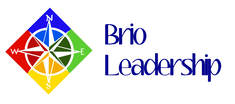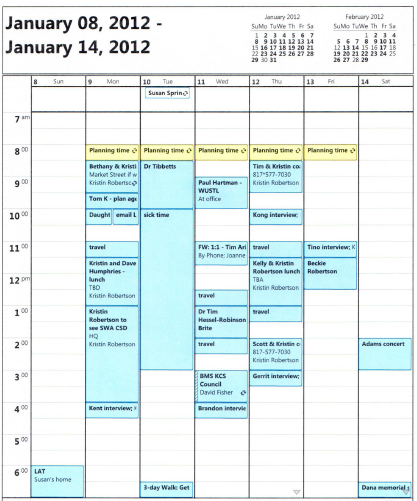 We are almost six months into a pandemic that has radically changed our lives. We are working from home, communicating electronically and meeting virtually. Despite these cataclysmic changes, leaders need to remain calm, be emotionally available to their teams and inspire others to sustain high performance standards. This is why the concept of mindfulness, which helps not only your team but yourself too, remains an important tool for leaders, even in these unprecedented times. We know that the most highly effective leaders practice a high degree of mindfulness. Mindfulness is the ability to be fully present in the moment, observing both your own thoughts/feelings and what is going on around you. Mindfulness is important to leaders because they must be aware of both what’s going on inside them (their thoughts, reactions, emotions and moods) and what’s happening outside them in their teams, in their organizations, with their stakeholders and within the larger society. If leaders are unaware of any of these dynamics, they are not able to manage either themselves or their organizations. How can a leader increase his or her mindfulness?  Entry from Kristin's Journal Entry from Kristin's Journal The research strongly suggests that a daily practice of reflection, practicing quiet attention and regular exercise is one of the best ways to develop your personal and leadership effectiveness. It also helps you manage stress by scheduling brief “time outs” during a hectic day. At Brio Leadership, we suggest a formula called “15/15/15 plus three”. What that means is a daily practice of 15 minutes of reviewing and planning, 15 minutes of focused attention or quiet time and 15 minutes of aerobic exercise, plus three sessions a week of a creative pursuit. Let’s explore each of these. Reviewing and planning The first 15-minute segment is reviewing and planning: you review the previous day and plan for the coming day. We suggest that you use a journal for the review. Any notebook will do – sometimes I use an inexpensive wire-bound notebook, other times I buy a handsome journal with blank pages. In your review, think about your day’s activities, thoughts, reactions and feelings and note these two things:
This should take you about 10 minutes to do. I keep a daily journal in which I notate, with a star or asterisk (*) the things that gave me the greatest joy, and with a minus sign (-) the one thing that I am least proud of or gave me the least joy. Here is what a typical entry in my journal looks like: The other 5 minutes are spent looking over your coming day with your calendar in order to set intentions for what you will accomplish. Think of the people you are going to see, the meetings you will attend, the customers you will call, and ask yourself the following questions:
Many of my clients set aside 15-20 minutes at the beginning of their day to review and plan. Your Outlook calendar might look like this: Note the yellow time segments at the beginning of the workday. You could also set aside 30 minutes at the end of the day, or during your lunch hour. It is best to pick a time and stick to it every day, so you develop a routine and train your co-workers to respect your private time.
I was once in a corporate office where I had the opportunity to see several employee’s Outlook calendars. They all had 30-minute recurring appointments with themselves each morning for planning. The company had sponsored their attendance at a time management seminar in which they were taught to set aside planning time. It was an accepted practice at this office to spend the first 30 minutes in planning. I strongly recommend making morning planning an accepted practice at your office. Focused Awareness It is remarkable to learn how many highly effective and high-ranking executives have a regular meditation practice, or time for focused awareness. Most of them credit their focused awareness practice with building their ability to focus, to deal with stress, to be present in the moment and to have a broader perspective on issues. Only 15 minutes a day can give you these benefits over time. Many people find that 15 minutes of focused awareness or meditation are too much to bear at first. The research has good news about this: Just 5 minutes a day of focused awareness can bring you some of the benefits listed above. Of course, 15 minutes is ideal. DO NOT BEAT YOURSELF UP if you cannot do 15 minutes at first. Do what you can and try to build up your awareness muscle by gradually increasing the duration of the exercise. As Ram Dass says, “The only bad meditation is the one you didn’t do.” The point of focused awareness is to still your mind a bit, to focus on one object or process (your breath is the most common focal point)and to observe and let go of any thoughts that creep in (and there will be thoughts!). The act of observing and letting go of thoughts, then directing your attention back to the focal point, is the discipline that builds focus and awareness. To do this, sit up straight in a quiet place and close your eyes. Your back should be straight so your belly area can expand. Scan your body to make sure that you are relaxed in every spot you might hold tension: your shoulders, your face, your stomach, your legs. Take several deep belly breaths, making sure you fill your entire lungs. Now, turn your attention to your breath and observe it. As you pay attention to your breath, count your breaths. An inhale and exhale equal one breath. Count from one to ten and then start over. If you find yourself mindlessly counting past ten, just say to yourself, “Oh well,” return your attention to your breath and start over at number one. I like to think of focused awareness as the still spot within you that is always available. If you equate your life, with all its drama, concerns and fret, to the surface of the ocean where there are waves, storms and squalls, then focused awareness is a place that is three miles below the surface of the ocean. Here, it is always tranquil. The surface storms do not touch you there. I teach all of my clients a quick form of focused attention called HeartMath. It is a good way to start your focused awareness session, but is best used as “mini” focused attention sessions during the day. Give us a call at 817-706-7027 if you want to learn more about HeartMath, or visit www.heartmath.com. Lastly, give focused awareness a chance. This is not a practice that delivers immediate results. Give it at least eight weeks before you judge it. After eight weeks, you will begin to notice that you don’t react as quickly to trigger situations, that you feel more calm even during stressful situations, and that you see broader perspectives when presented with a problem. You will also begin to look forward to your quiet time as a refuge from the storms of life, a safe place you can go within yourself. Aerobic exercise 15 minutes of aerobic exercise is the last daily habit we recommend. No groaning, please! It is relatively easy to work in exercise into your day, and it doesn’t have to be all at once. There are some simple ways of increasing your heart rate several times during the day:
Plus Three The last section of our formula is plus Three, and it refers to doing something creative three times a week. Creative is defined as something that engages your right brain such as music, art, dancing, cooking, baking, sewing, gardening, fly fishing, flying, knitting, woodworking, playing with your kids, etc. It needs to be fun and it is usually a hobby. If you cannot do these activities three times a week, then enjoy an armchair version of them. For example, listen to music rather than make music, or read about flying a vintage airplane, or peruse a cookbook. The idea is to do or think about something completely different from your work and use different thought processes as a diversion. This is a great lesson for a life well lived. I don’t have time for all this! So, you think you don’t have time for 15/15/15 plus Three? We suggest you examine your daily routines to find hidden time bandits that snatch away your precious time. Do you watch TV at night? Instead of falling asleep to the TV, do your daily review before going to bed. We tend to dream about what we think of right before sleep, so listing what you are grateful for will give you pleasant dreams. The opposite is true about watching the evening news before turning in – you will sleep poorly and have agitated dreams. What about social networking or online gaming time or Sudoku or computer games? Can you take 15 minutes out of the time you spend/waste doing these things? I know some couples who do their daily review together. To do this, you might light a candle, take some quiet time to reflect and write, then share your most grateful and least grateful moments with each other. It is a sweet way to end your day and strengthen your relationship. It helps to have someone else to share your daily review with and keeps you accountable to doing it. Mahatma Gandhi once said, “I have so much to accomplish today that I must meditate for two hours instead of one.” He knew that meditation helped him be highly efficient in the time he had available. It is counter-intuitive that sitting still for longer times will actually make you more productive, but Gandhi certainly accomplished great things. Think of how you could apply this concept to your days. Realize that you spend time on what you value. Do you value your leadership abilities? If so, you will find time for these important practices. After 30 days, new disciplines become habits, so try our formula for a month and see what benefits you gain. After that, you will miss them if you have to skip a day.
1 Comment
|
From the desk of
|
Our services |
Our Company |


 RSS Feed
RSS Feed

